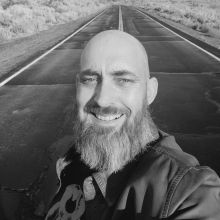
Every photograph tells a story. For Chris Couture, each one reflects a moment in time from his deeply powerful journey, one that has been in the making for the past 15 years. What began as a personal escape through capturing landscapes has evolved into a transformative blend of photography, various genres, writing, deep community connections and personal growth.
From capturing cowboy culture to the energy of live performances, Chris captures life’s unfiltered and candid moments at their most raw. And through it all, he leaves a personal mark with his perception, editing style and commentary.
Also a successful storyteller, Chris Couture’s latest book, Songs I Couldn’t Write, blends poems reflecting his journey alongside his photography, exploring topics that span the entire human existence: love, loss, sobriety, healing and transformation.
Through his photography and writing, Chris reminds us that the creative process is there to help us heal, evolve and inspire others to become their most authentic version through self-expression.
I had the incredible opportunity to interview Chris and learn about his journey into photography and storytelling, what inspires his creative process and his favorite spots in the region.
I hope his interview leaves you just as inspired as I am to pursue passion and purpose through creative outlets and to seek community engagement within the creative spaces in the Tahoe-Truckee region.
All photos are courtesy of Chris Couture.
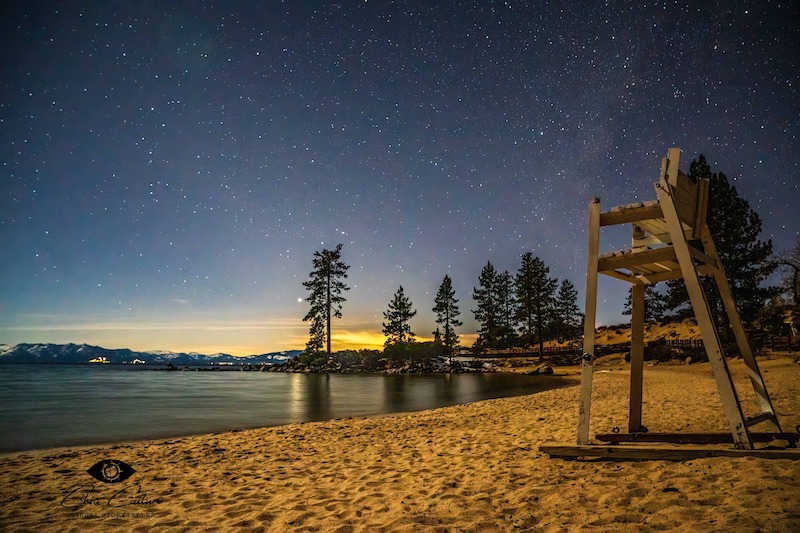
Can you tell us a bit about your photography journey? What inspired you to start and how do you stay motivated to continue the pursuit of following your passion and sharing your story through your work?
Absolutely! Ironically enough, I just hit my 15-year anniversary of the first time buying a camera. Looking back at those earliest days, photography was a form of therapy. All my images from back then were strictly landscapes devoid of any human element. In my day-to-day life, I had to work with a lot of customers, and landscape photography was my way to escape from people.
Slowly, my interest morphed into western and ranching photography. The human element was there, but they were all typically on horseback. As a kid I had wanted to be a cowboy, so it was always an amazing experience to spend time out on a ranch with the folks that cared for the land and animals. Honestly, I’d love to find my way back to it.
Believe it or not, western photography led me to the music photography I do today. I was working on a project for an independent artist that needed some western images for his CD release. The album producer was out of Nashville and happened to have won five Grammy Awards. To make a long story short, the producer fell in love with my western images and asked if I had any interest in concert photography.
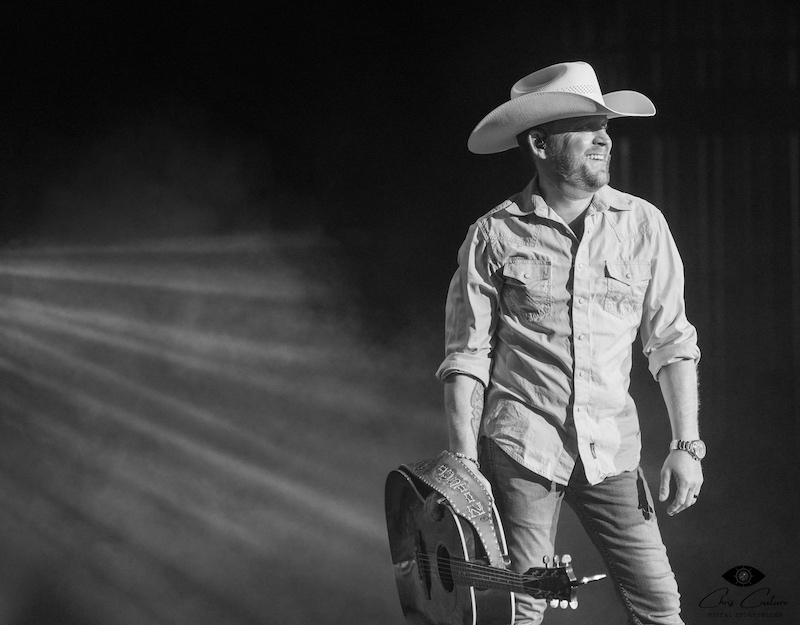
Photograph of Justin Moore
Although I had never considered concert photography, he got me set up with my first concert gig. All was well, the band treated me like family, and then it was showtime. I must admit, I was absolutely terrible at photographing a concert. Out of 300-plus images, I had one that was decent. Seeing how awful my images were and how difficult concert photography could be made it a challenge to get better. I also felt it incredibly awesome to be able to combine my love of music with my love of photography.
As far as motivation goes, I think back to this passage that I read somewhere. It said something to the effect of “what if the sunrise occurred only one time in our lives? How many people would flock to witness it?” Although that’s not the case, of course, every single sunrise is someone’s very last. I suppose I don’t want the last sunrise that I’ve watched to be a month, or even a week ago.
I also think back to when the world ground to a halt. I had 13 shows on my calendar to photograph, and they ALL were canceled. I swore to myself that if concerts ever became a thing again, I would not take them for granted.
I’ve met some really great people and made some amazing friends thanks to photography.
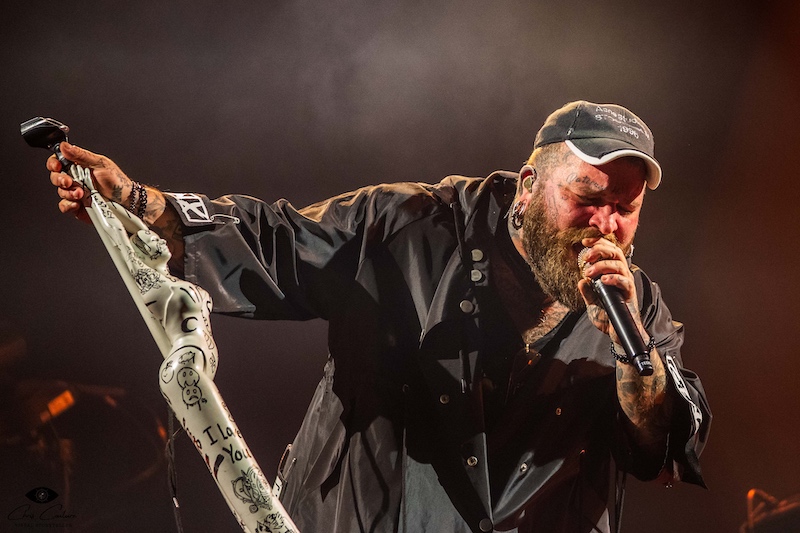
Close-up of Teddy Swims
You have such a wide variety of subjects you work with, from concerts and portraits to landscapes, wildlife and astrophotography. What does a “typical” day in your life look like?
I actually have a normal 9 to 5 job, so a typical day is actually the mundane corporate grind. When I get home, if I don’t have concert to shoot, I spend a great deal of time checking tour schedules, emailing publicists, editing photos, and writing (concert reviews or poetry).
On my days off, I’ll load my dog in the truck and “make a loop.” This loop is a route that has rewarded me with several amazing raptors to photograph. There are also many scenic vantage points and rustic barns along the way.
While out looking for something to photograph, I spend a great deal of time in thought. I’ll often pull off to the side of the road and jot down phrases that I think sound cool. When I get home, I’ll sit down and try to piece all those thoughts and phrases together.
Concert days are slightly different, especially if travel is involved. If the venue is only an hour away, since I’m over 40, I try to get a nap in. Other times I may drive 5 hours or more. I’ll use that time to become familiar with the artist’s catalog of songs, if it’s someone I’m not familiar with.
After the show, there is a lot of selecting the good images from the bad and doing a bit of editing in Lightroom. Once I have the images compiled, I’ll begin writing my review of the show. I try to have everything completed within 48 hours, although my success rate varies greatly.
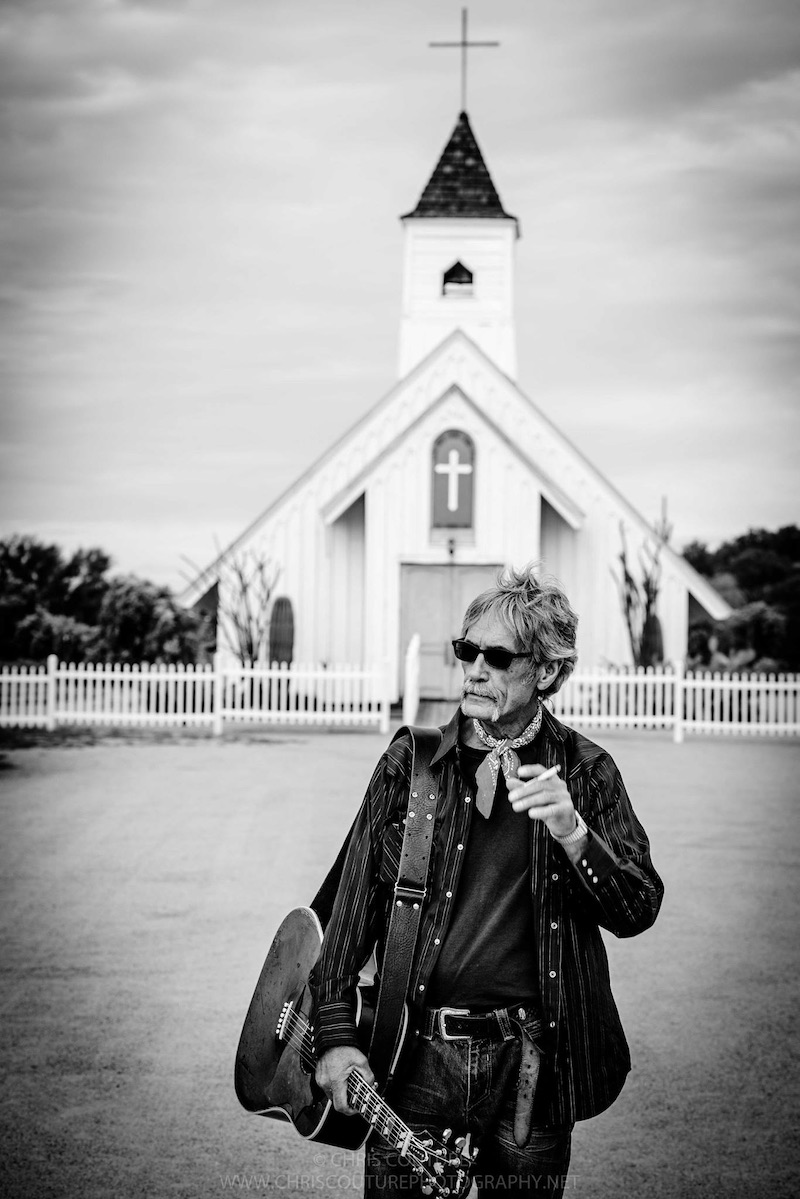
"Outlaw at the Cross," a portrait of Billy Don Burns
What is your favorite photo you've taken thus far, and the story behind it that makes it so memorable?
That’s a really tough question. If I really had to choose, it would probably be an image of honky-tonk legend Billy Don Burns that I titled “Outlaw at the Cross.” This was one of the first portraits I had ever done of a musician, and I was incredibly nervous. I felt that my hands were shaking so badly at the time. I was pleasantly surprised that any of the images were in focus.
To understand what makes the image memorable, you’d have to know about Billy Don Burns. Billy has been in the music business for over 50 years and has worked with some of the truest legends in country music. His songs have been recorded by outlaws such as Willie Nelson and Johnny Paycheck as well as Colter Wall and Cody Jinks.
Billy Don once unseated Johnny Cash’s song from the Number One spot in the country. A feat that prompted The Man in Black himself to write him a congratulatory letter. He has also worked with my all-time favorite singer, Merle Haggard. I suppose that was the cause for all my nervousness.
As far as the image itself, Billy Don Burns is seen with his guitar and a cigarette in front of an old church. The church known as the Elvis Memorial Chapel is located in Apache Junction, Arizona, and is an actual movie prop that was built for the 1969 Elvis Presley movie Charro!
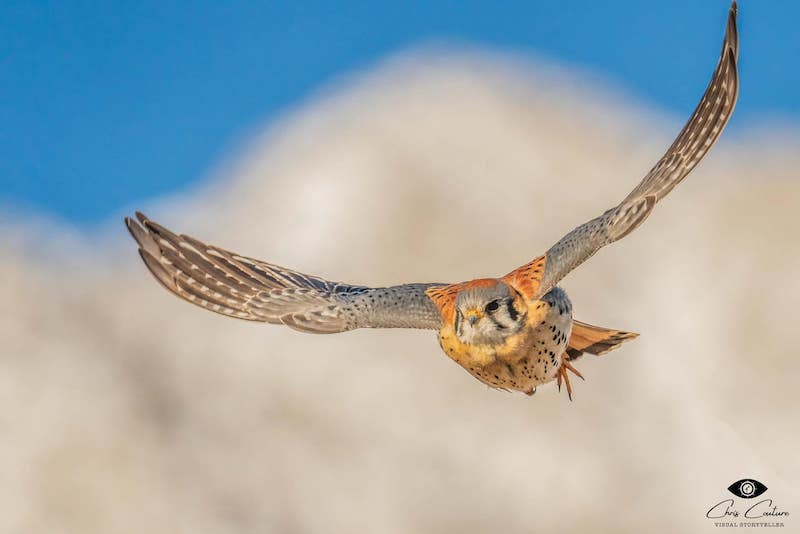
An American kestrel in flight
You also recently published your latest book Songs I Couldn’t Write, featuring poems about the human experience including love, loss, mental health, sobriety and the spiritual realm alongside your photography. What inspired you to publish this collection, and how do you hope it will leave an impact on your audience?
Honestly, the shallow side of me was partly inspired to release this collection from the incredibly positive feedback and the success of my first project, Chris Couture - An American Poet. I also found inspiration in the words of others whenever I’d post a poem. Oftentimes, I would receive messages thanking me or saying, “Man, I really needed this today.”
I realized that at one point or another, so many people are going through “it.”
Whatever the “it” may be, it was my hope that this poetic journey could help somebody else in their darker times. That they could read the words and think to themselves that they’re not alone, that sometimes the brightest of days come after the darkest of skies. Of course, if they didn’t feel like reading, I hoped that the photos contained could offer a brief sense of escape.
Except for three or four of them, all of the 40 poems in the book were written within a 12-month period. Somewhere in those 12 months, I made the decision to quit drinking. I felt that it was important to include the stories that deal with my journey to sobriety simply so that they might help somebody else.

Photograph of Cody Jinks
What advice would you give to aspiring photographers or writers?
When it comes to photography, I would recommend practicing every day. Learn your camera’s functions, limitations, menus and controls. Also, it’s important to learn the rules of photography and composition. Learn these rules so that you’re able to effectively break a specific rule to communicate a stronger feeling in an image.
You truly do not need the newest and biggest camera to create stunning images.
When it comes to music photography, relationships are VERY important. You’d be surprised at how small the music world can be.
As for writing, write something every day. It doesn’t have to be a long story. Simply writing out a phrase or two can be enough, but do it every day. A practice that I am trying to get better at is to turn the internal editor off. What I mean by that is to simply write whatever comes to mind. It’s almost like a brainstorming session. Once you have it all down on paper, you can go back and structure it to rhyme and/or make sense.
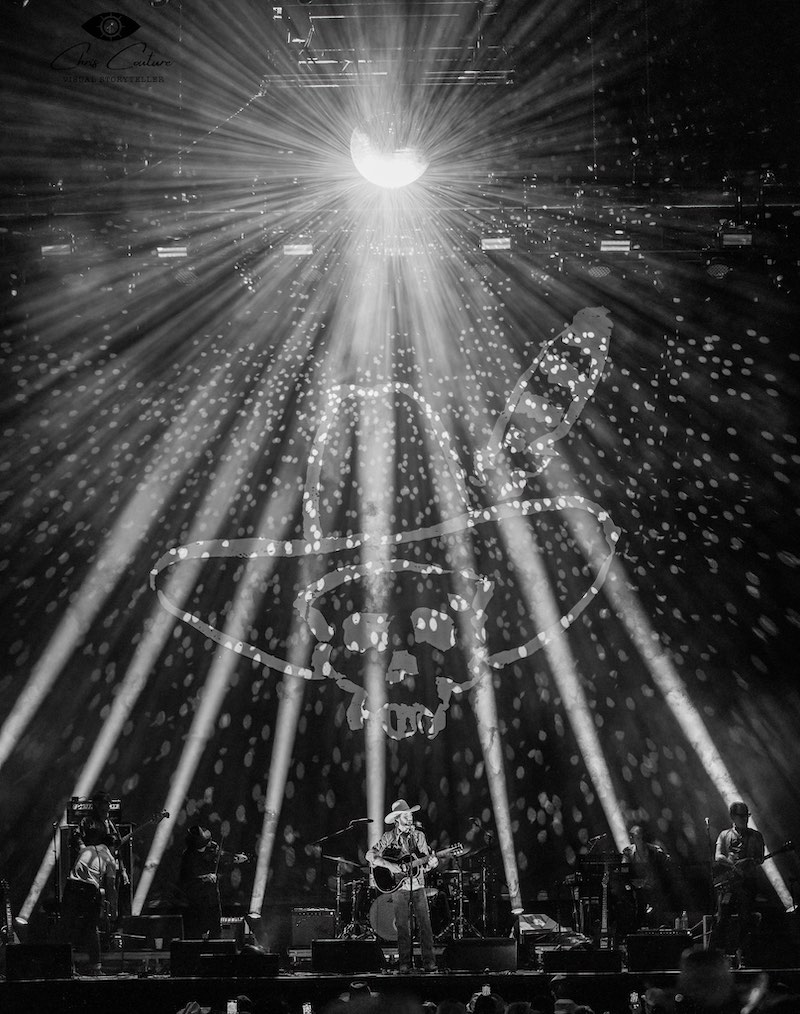
Ryan Bingham at the Lake Tahoe Amphitheater
How do you find creative inspiration, and what does the process look like for you?
I was recently asked a similar question. The question was 'How do you come up with the stories that you write about?' My answer was that I simply pay attention.
I’m sure that probably sounds generic, but it’s true. I have found a ton of inspiration from posts that people have made on Facebook about their lives. Or from stories that either my friends have told me or that I’ve overheard in the grocery store. I’ve also found inspiration from a simple meme. When you pay attention to what it is going on around you, the possibilities are endless.
My writing process generally starts out by a phrase or two that I typed into the Notes app on my phone. Next, I will begin writing by hand a rough draft on paper. Once I feel that the story is complete, I will write it again on paper. This time I organize it to make better sense and to ensure that the rhymes hold up. I then type the finished product into the Notes app on my phone. This essentially gives me multiple opportunities to make corrections.

A golden glow illuminates Sand Harbor
Where are some of your favorite places in the Lake Tahoe region for photography or adventures?
I realize it’s not Lake Tahoe, but one of my favorite spots is Convict Lake. I’m also a huge fan of Silver Lake. As far as Tahoe, I love Emerald Bay, Eagle Falls and Sand Harbor. The Carson Valley is amazing as well. Especially when the bald dagles show up for calving season.
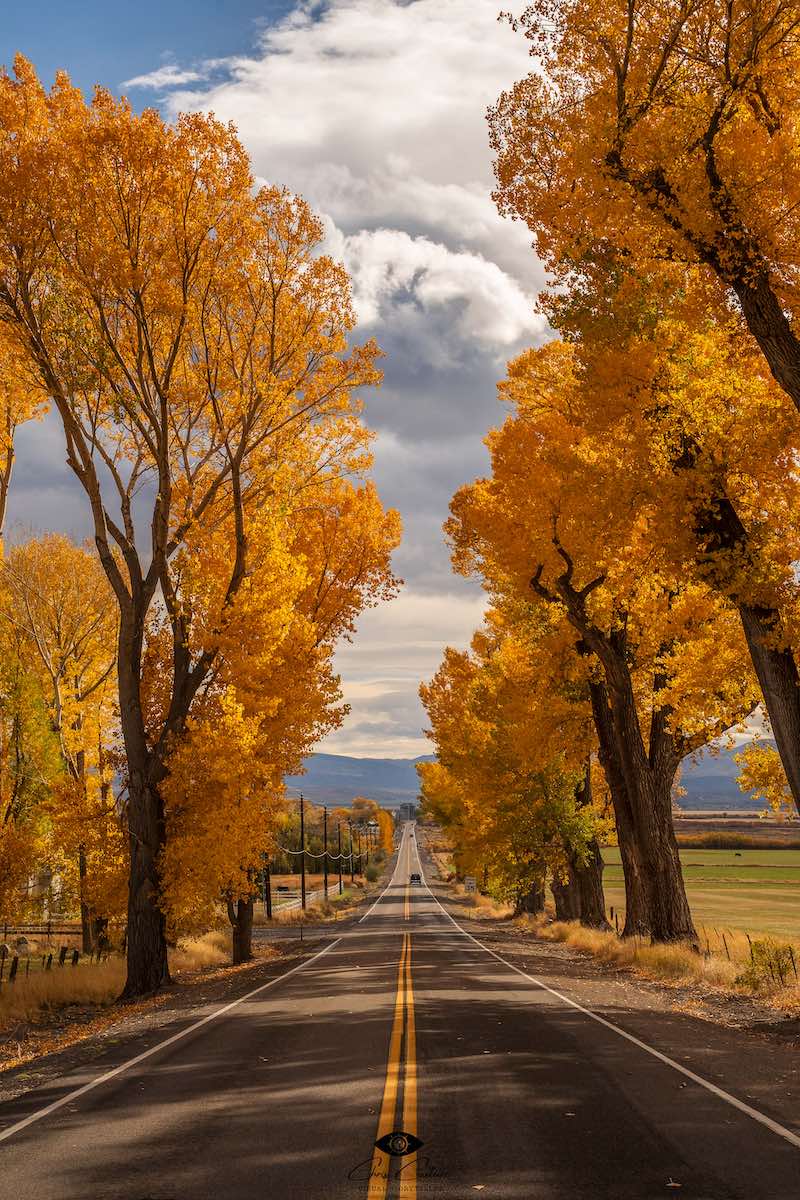
Fall foliage and the open road
Where can people connect with you on social media and see more of your work?


 Kirsten is an outdoor adventure enthusiast, writer and photographer. You can typically find her hiking, paddleboarding, cross-country skiing and checking out new spots to share in the Tahoe Donner region. She has been lucky to call Tahoe her second home since she was a child and aims to inspire people to experience Tahoe and fall in love with the beauty and adventurous spirit of the region through her blogs and content.
Kirsten is an outdoor adventure enthusiast, writer and photographer. You can typically find her hiking, paddleboarding, cross-country skiing and checking out new spots to share in the Tahoe Donner region. She has been lucky to call Tahoe her second home since she was a child and aims to inspire people to experience Tahoe and fall in love with the beauty and adventurous spirit of the region through her blogs and content. 






